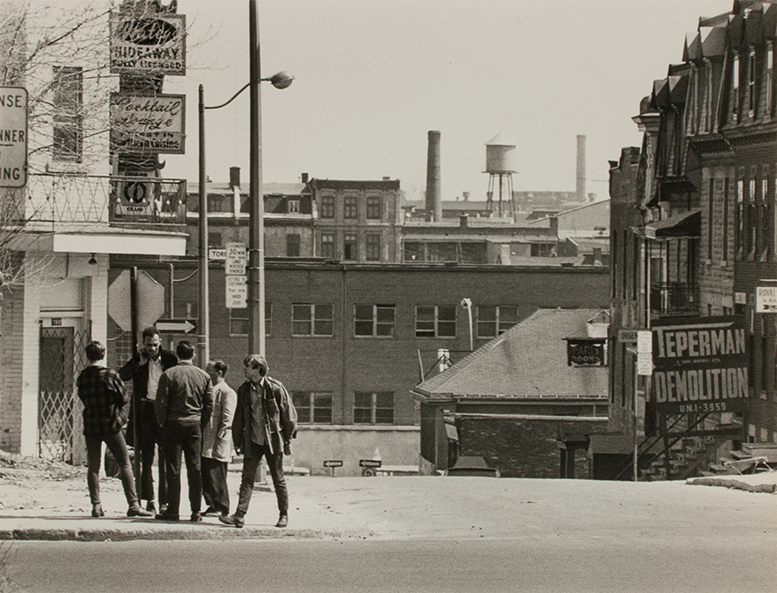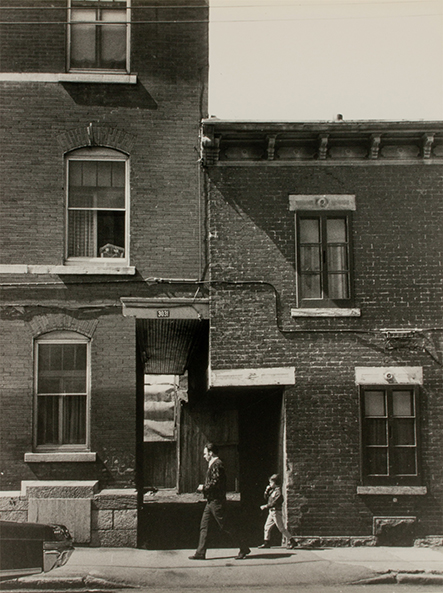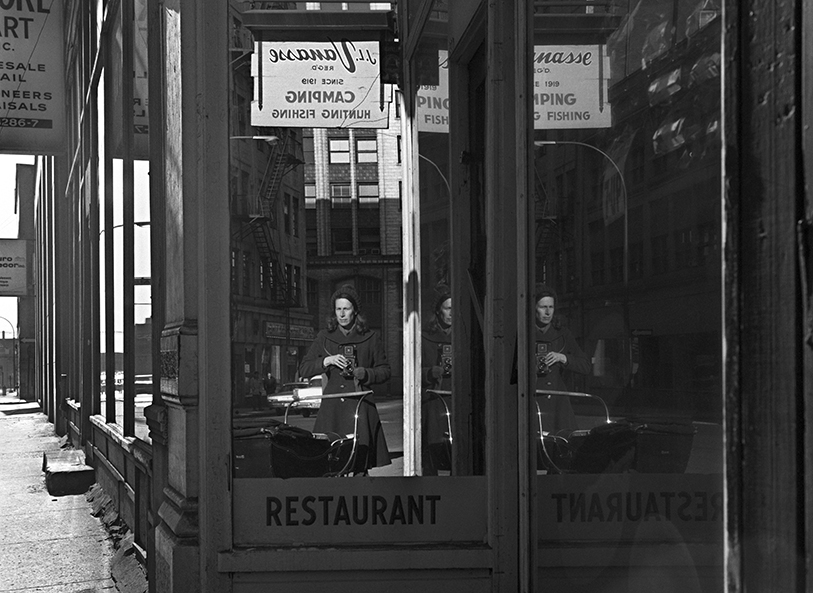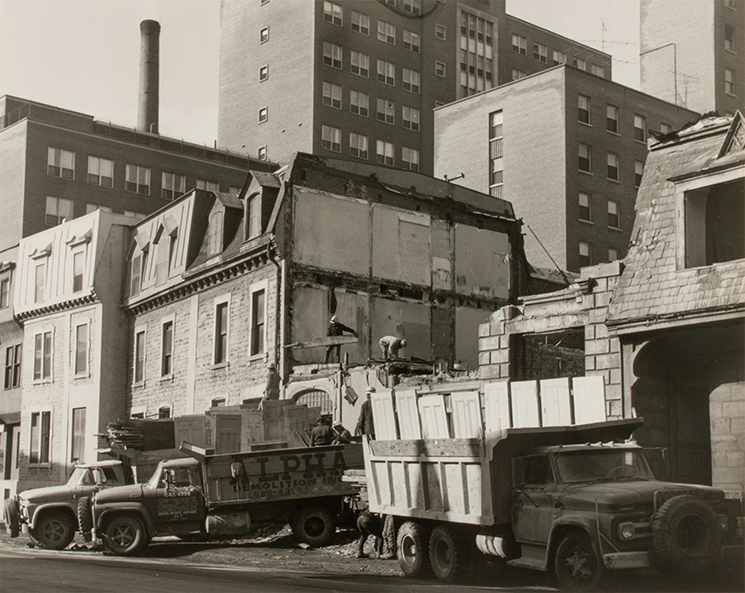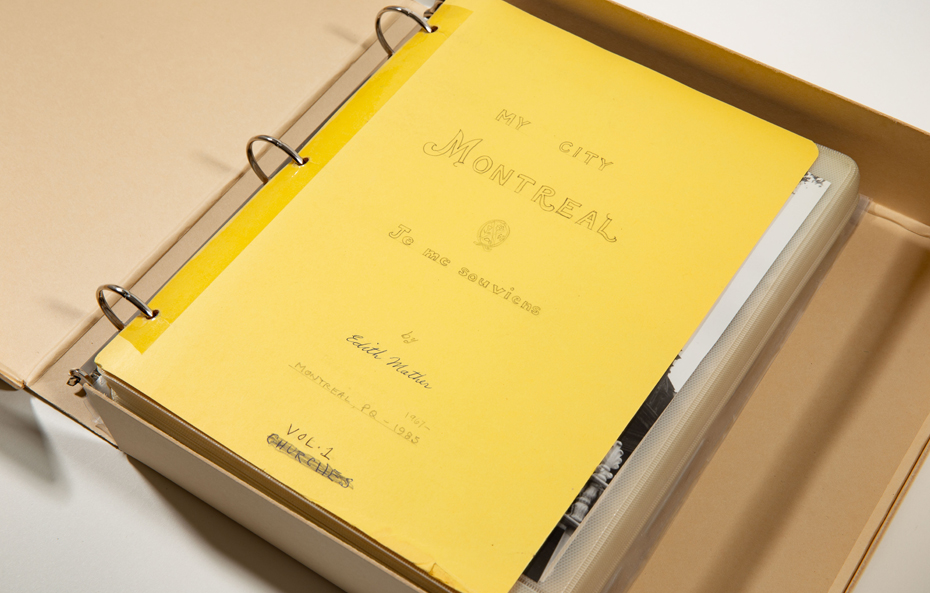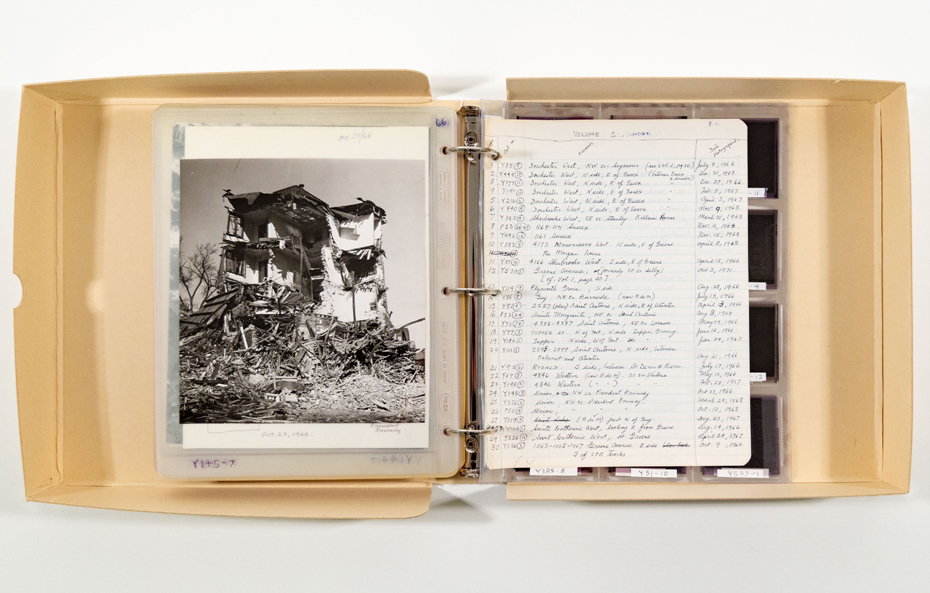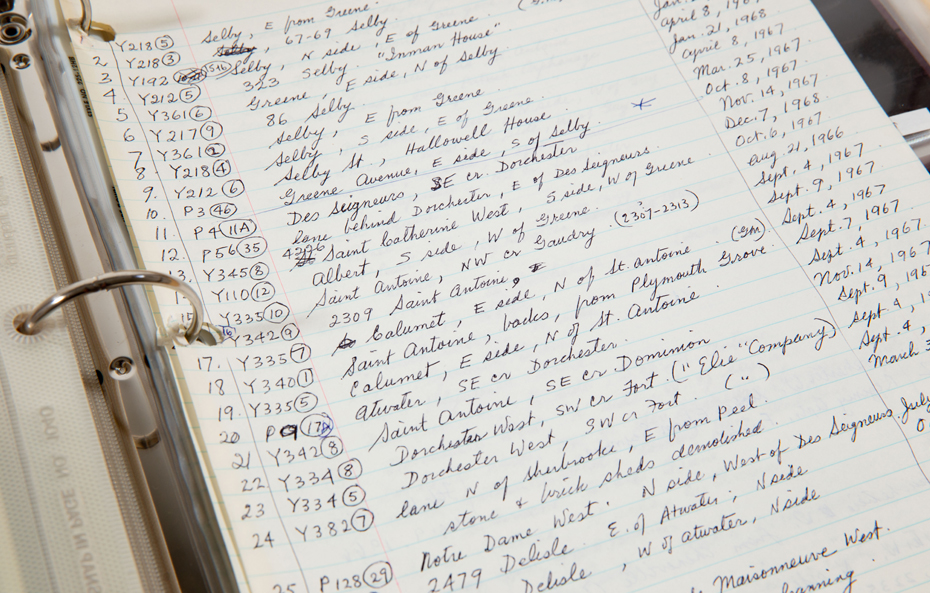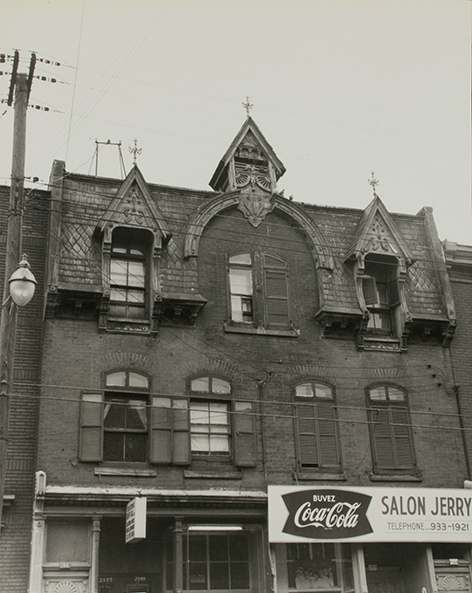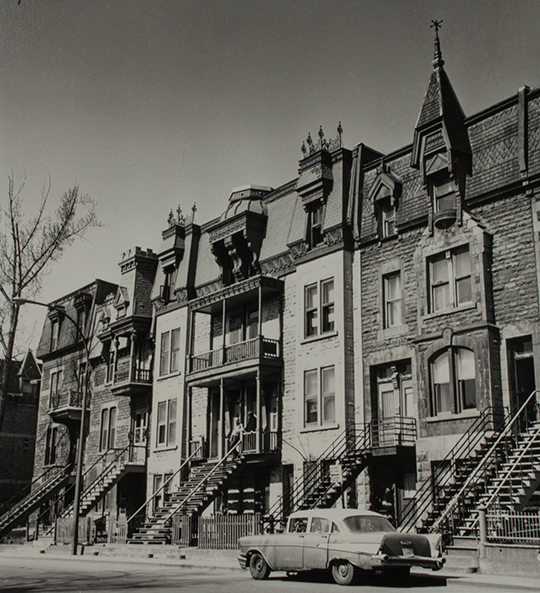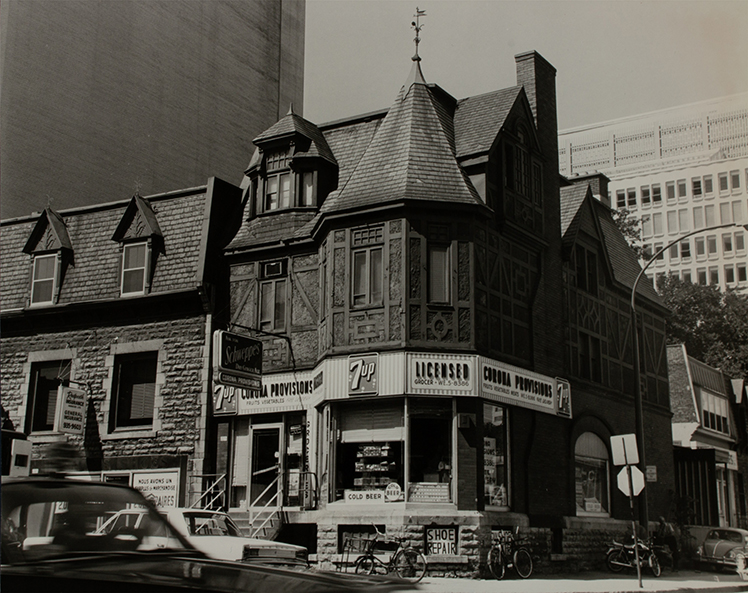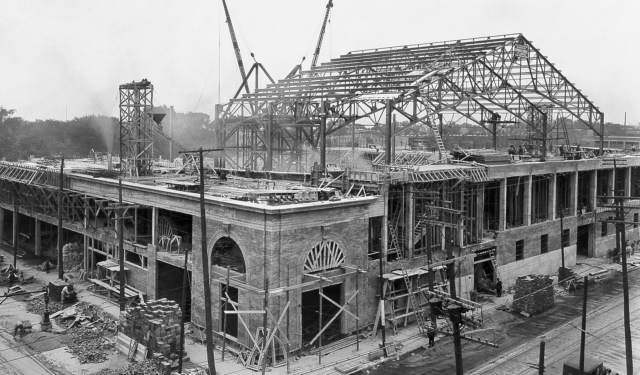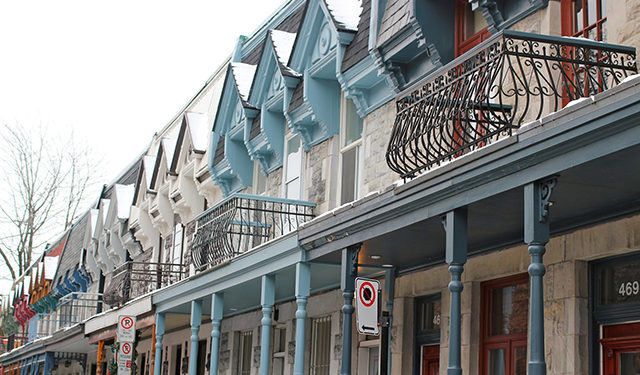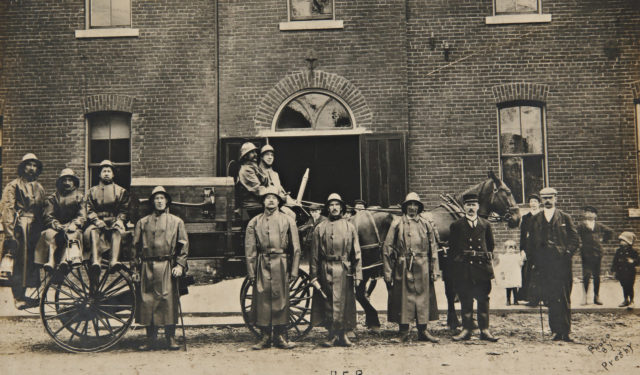Edith H. Mather, Montreal Street Photographer
Meet Edith H. Mather, a photographer who systematically documented Montreal’s changing urban landscape during a pivotal moment in the city’s history.
April 26, 2024
In 2012 the Museum acquired a significant body of work created by photographer Edith H. Mather. Consisting of 4,293 photographs taken in Montreal between 1965 and 1985, the fonds documents the city’s streets and architecture during a period of accelerated change.
Although Mather’s contribution to the history of photography in Montreal has been recognized,1 it remains largely unknown outside the academic sphere. Receiving no institutional or financial backing to pursue her art, she practiced photography as an amateur, for herself.
The fact that Mather operated in relative obscurity did not prevent her from carrying out a sustained, rigorous and very personal documentary project devoted to recording the transformation of Montreal’s built environment at a crucial juncture in the city’s evolution. An important aspect of this project is the form it takes: Mather assembled her photographs into three series of albums, each meticulously organized and annotated. Evidently aware of the historical value of the fruit of her labour, she took considerable pains to make the raw material intelligible to posterity.
LIFE AND WORK
Edith H. Mather was born in Montreal in 1925 and grew up in the neighbourhood of Hampstead. As an adult, she resided mainly in the city’s downtown and West-end sectors. The bulk of her photographic work was produced in the 1960s and 1970s, when she was living at the corner of Greene Avenue and Sainte-Catherine Street, in Westmount. Although Mather was introduced to photography as a teenager, she was in her forties by the time she took up the medium with real dedication.
| Discover Edith Mather’s photographs on Online Collections |
This period coincided with the birth of her fourth child, Geoffrey, whom she had with her second husband, the poet Bryan McCarthy. Mather photographed the streets of Montreal, both around her immediate neighbourhood and beyond, while taking walks with her son in his carriage. She later recalled: “I just liked walking, and I had this urge to take pictures, that’s all. I had to take the baby for walks, and I just kept going.”2 If at first her impulse to photograph was closely tied to her daily domestic duties (encouraging the baby to nap, getting fresh air), it gradually became the fuel for a project carried out systematically and for its own sake.
A FORM OF STREET PHOTOGRAPHY
Mather has much in common with the many street photographers who have aspired to document, for a variety of reasons, the idiosyncrasies of Montreal’s urban fabric. Street photographers are generally obsessive types who tread the pavement continually and repeatedly, often returning to particular sites in order to discover new things or record how they have changed. Mather, witnessing the major demolition and construction sites that were transforming Montreal’s architectural landscape, made it her aim to photograph those parts of the city that were disappearing.
MATHER'S MONTREAL
The first series of albums Mather produced, titled “My City, Montreal,” contains the largest number of general street views. Although taken mainly in the downtown core, they also picture other neighbourhoods, including Westmount, Saint-Henri, Milton-Park, the Plateau-Mont-Royal and Old Montreal. The series, composed of 1,012 prints mounted in sixteen binders, is not organized chronologically but – rather loosely – by subject matter.3 At the end of each binder there is a handwritten index that lists each print included according to negative number, street depicted and date taken. Wherever possible, specific addresses or street corners are identified. Printed by Mather herself in her home darkroom, each photograph offers a distinctive take on the built environment as she encountered it.
She was especially captivated by the details of Victorian vernacular architecture that then adorned many of Montreal’s buildings. Usually inspired by earlier, grandiose architectural styles, such decorative elements could make relatively modest buildings appear much more “fanciful.” In 1977, in collaboration with author René Chicoine, she actually published a bilingual book on Montreal architecture titled Touches of Fantasy on Montreal Streets. Mather’s photographs focus on these architectural fragments from the vantage point of a pedestrian, often juxtaposing them with the new, generally much larger constructions being erected.4
Her eye was also drawn to the signs of local commercial life that were gradually being erased and largely replaced by anonymous facades or symbols of global corporate culture. Scenes of demolition recur frequently in the albums, often contextualized by adjacent buildings left standing.
ARCHIVAL WORK
Although Mather appears to have stopped photographing Montreal’s streets in the mid-1980s, the work she realized during her prolific two-decade creative span acted as a segue to the archival phase of her career. In 1985 she earned a diploma in Library Studies from Concordia University, where she was subsequently employed as a librarian and book restorer for a period of twenty-five years.5 Upon retiring in her mid-eighties, she turned her focus to preparing her photographic series for donation. This was a considerable task that involved refining and indexing the albums, but also pairing each print with its companion negative. Edith Mather died in 2016, four years after bequeathing this major photographic oeuvre to the Museum.
Notes
- See especially Tanya Southcott, “Through the Lens of Edith Mather: Photographing Demolition and the Transforming City,” in Martha Langford and Johanne Sloan, eds., Photogenic Montreal: Activisms and Archives in a Post-industrial City (Montreal: McGill-Queen’s University Press, 2021), pp. 80-99; and Tanya Southcott, “Architecture, Photography and Memory: The Collection of Edith Mather,” in Joanne Burgess, Cynthia Cooper, Céline Widmer and Natasha Zwarich, eds., Collecting Knowledge: New Dialogues on McCord Museum Collections/À la recherche du savoir : nouveaux échanges sur les collections du Musée McCord (Montreal: Éditions Multimondes, 2016, Cahiers de l’Institut du patrimoine de l’UQAM collection), pp. 193-210.
- Edith Mather, quoted in Southcott, “Architecture, Photography and Memory,” p. 201.
- The photographic prints, each measuring approximately 20.3 x 25.4 cm, are accompanied by 933 negatives, in 35mm and medium formats. The two other series in the fonds, titled “Found Montreal” (1979-1980) and “Koncrete Kids” (1976-1985), are also organized thematically and primarily feature architectural details. See the McCord Stewart Museum, M2012.113.1.1-16; M2012.113.2.1-13; and M2012.113.3.1-2.
- See Edith Mather and René Chicoine, Touches of Fantasy on Montreal Streets/Les rues de Montréal. Façades et fantaisie (Montreal: Tundra Books, 1977).
- Southcott, “Architecture, Photography and Memory,” p. 208.

